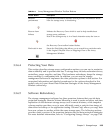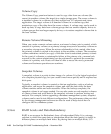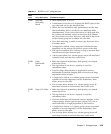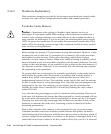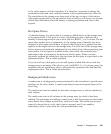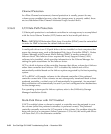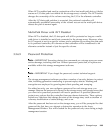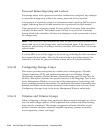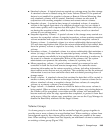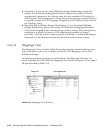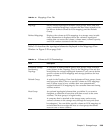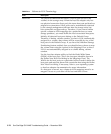
Chapter 3 Storage Arrays 3-63
When AVT is enabled and used in conjunction with a host multi-path driver, it helps
ensure an I/O data path is available for the storage array volumes. The AVT feature
changes the ownership of the volume receiving the I/O to the alternate controller.
After the I/O data path problem is corrected, the preferred controller will
automatically reestablish ownership of the volume as soon as the multi-path driver
detects the path is normal again.
Multi-Path Driver with AVT Disabled
When AVT is disabled, the I/O data path will still be protected as long as a multi-
path driver is installed on each host connected to the storage array. However, when
an I/O request is sent to a specific volume, and a problem occurs along the data path
to its preferred controller, all volumes on that controller will be transferred to an
alternate controller instead of just the specific volume.
3.3.6.9 Password Protection
Note – IMPORTANT Executing destructive commands on a storage array can cause
serious damage, including data loss. Without password protection, all options are
available within this storage management software.
Note – IMPORTANT If you forget the password, contact technical support.
The storage management software provides a number of security features to protect
data, including generation numbering to prevent replay attacks. Hashing and
encryption are employed to guard against client spoofing and snooping.
For added security, you can configure a password for each storage array you
manage. Because the password is stored on the storage array, each storage array that
you want to be password protected will need a password. A specified password
protects any options that the controller firmware deems destructive. These options
include any functions that change the state of the storage array such as creation of
volumes, modification of cache settings, and so on.
After the password has been set on the storage array, you will be prompted for that
password the first time you attempt a destructive operation in the Array
Management Window. You will be asked for the password only once during a single
management session.



